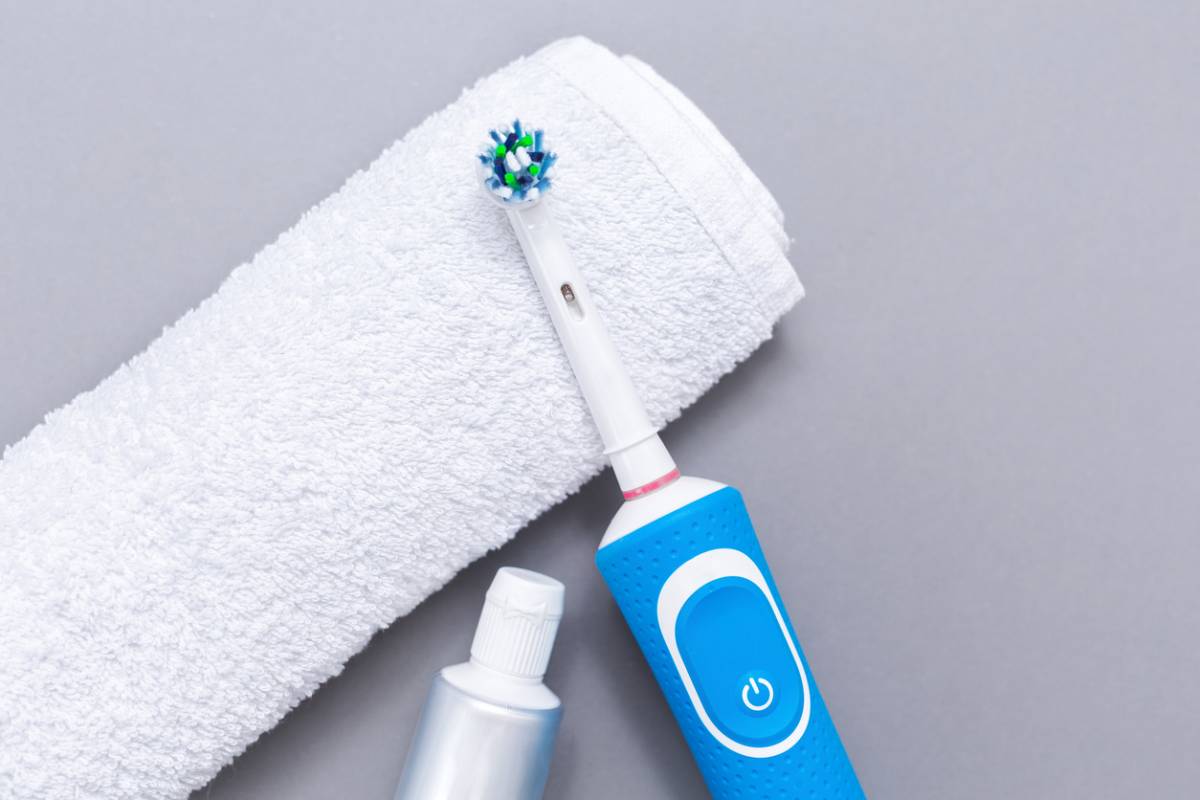Both electric toothbrushes and manual toothbrushes can be used to maintain your oral health if they meet the requirements established by the American Dental Association. If you are not sure if a toothbrush meets those requirements, you can always check for the ADA seal of approval on the packaging.
Is An Electric Toothbrush Better?
With that said, you may still wonder if one type of toothbrush is better than the other. The truth is that both have their own advantages. In order to help you make the best decision for yourself, let’s talk about the pros and cons of the electric toothbrush.
Pro: Micromovements
The micromovements of an electric toothbrush can loosen plaque in the smallest spaces. That can be challenging with a manual toothbrush, but it isn’t impossible. If you are looking for the most effective electric toothbrush, then choose one with a circular motion.
Pro: More Accessible
If you have a disability that limits your grip or the ability to hold your hand steady, then an electric toothbrush can be a lifesaver. Manual toothbrushes can be very difficult to manage if you have arthritis, Parkinson’s, or any other condition that limits your ability to control grip and movement.
Pro: Built-In Instructions
Many electric toothbrushes are designed with built-in timers that signal when you are supposed to start brushing a new quadrant of your mouth. This seemingly simple feature can help children and adults alike keep track of how long they’re brushing each section of teeth.
Pro: Less Plastic Waste
You should be discarding your electric toothbrush heads as often as you would discard a manual toothbrush. For most people that means a new toothbrush head every three to four months.
The environmental advantage of electric toothbrushes is that the disposable heads contain less plastic than your standard disposable toothbrush. Of course, this is assuming you purchase an electric toothbrush of decent quality that will last many years.
Pro: Better for Braces
Electric toothbrushes have also proven more effective for people who have dental appliances. Braces, permanent retainers, and other fixed appliances get in the way of brushing and flossing.
With all of their nooks and crannies, it isn’t uncommon for people with orthodontic appliances to develop dental caries. Fortunately, electric toothbrushes have proven to be effective in helping to prevent dental caries in people with orthodontic appliances, so you can cut down on the number of dental fillings in Irvine.
Pro: Easier on Gums
All ADA-approved toothbrushes are safe for your gums when used properly. The issue with manual brushing is that you are more likely to exert excessive force on your toothbrush as you clean your teeth. Brushing too hard can damage your enamel and your gums.
If you use an electric toothbrush, you are less likely to press the brush against your teeth with the same force. As a result, you’re less likely to damage your teeth and gums during routine oral healthcare.
Con: Costly
The only real downside of an electric toothbrush in a developed country is the cost. Millions of families are currently struggling with inflation and the costs of providing basic necessities for themselves and their children.
Unfortunately, a quality electric toothbrush can easily cost $75-$100. The brush heads are also expensive, averaging between $10 and $15 a piece. If you’re already on a tight budget that may be too much for you, and that’s okay.
Either Works
With proper usage, an affordable manual toothbrush can do just as good of a job as an electric toothbrush. An electric toothbrush simplifies the process in some ways, but your dentist in Irvine can easily show you how to maximize the efficacy of your manual brushing.

